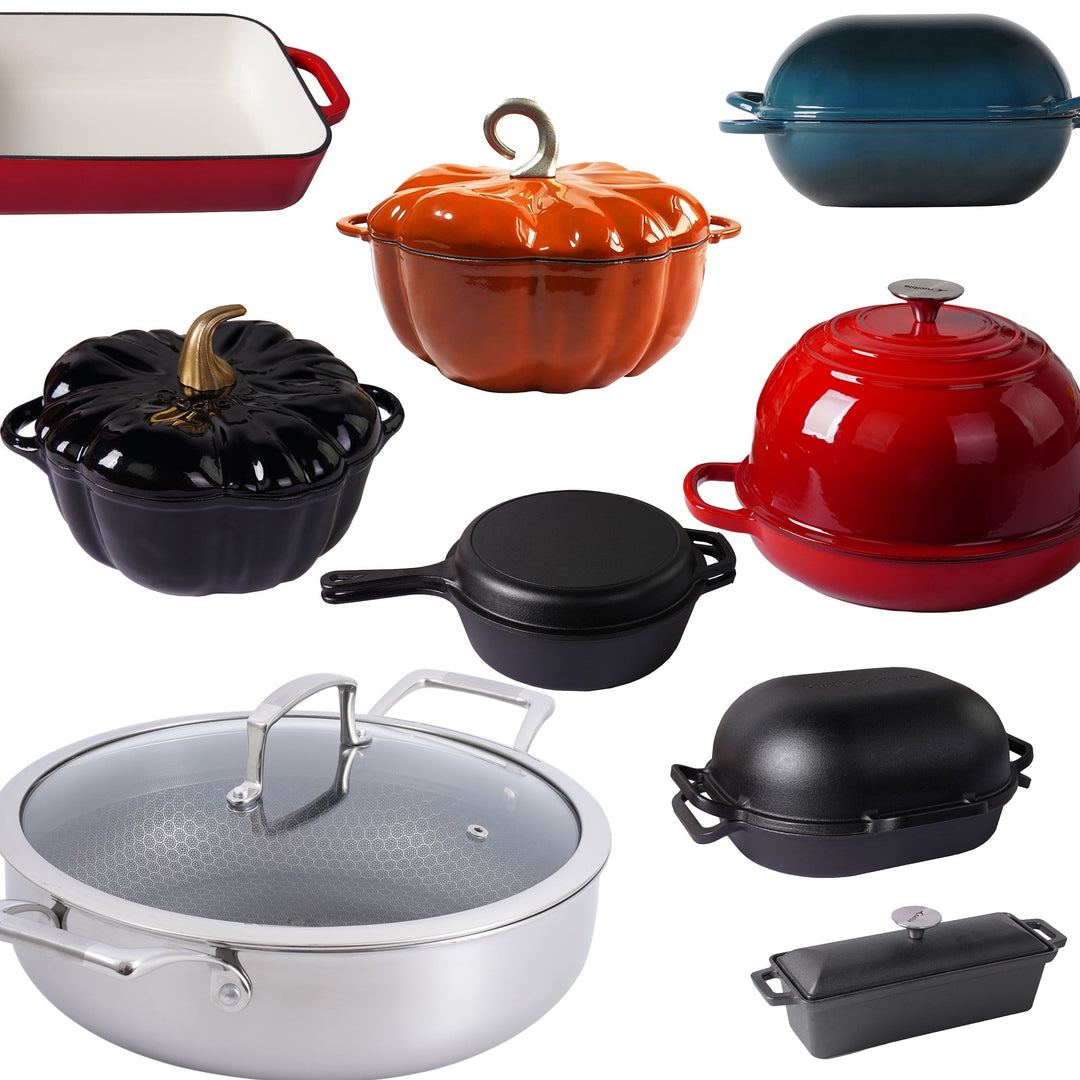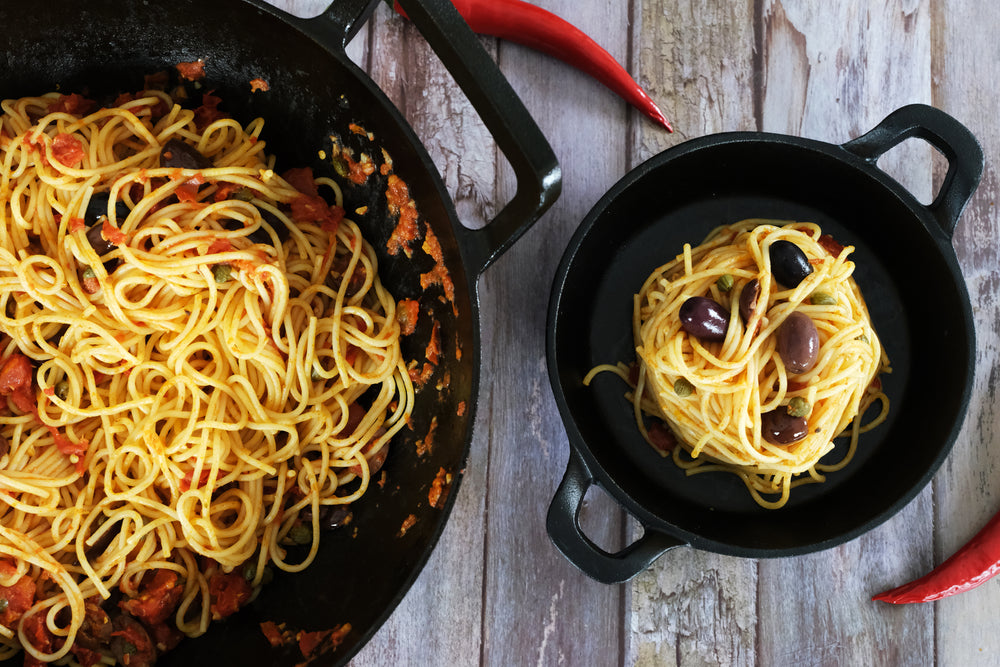Vilka olika typer av paprikor finns det?

Peppar är ett kryddmått som vanligtvis används i en mängd olika rätter för att tillföra smak och hetta. Det finns många olika typer av peppar tillgängliga, var och en med sin egen unika smak och hetta. I detta blogginlägg kommer vi att utforska de olika typerna av peppar och när man ska använda dem i matlagning.
1. Svartpeppar: Svartpeppar är den mest använda typen av peppar. Den görs av den omogna gröna frukten från pepparplantan Piper Nigrum, som kokas och torkas tills den blir svart. Svartpeppar har en stark, skarp smak och används ofta för att tillföra hetta och djup i smaken till rätter. Den är också en nyckelingrediens i många kryddblandningar.
Piper Nigrum odlas i Indien, Sri Lanka, Indonesien, Malaysia, Vietnam och Brasilien. Svartpeppar från Brasilien smakar annorlunda än de asiatiska varianterna, troligen på grund av det olika klimatet, jorden och skördemetoden. Sedan urminnes tider har svartpeppar från Indien ansetts vara den bästa, särskilt den som odlas i staden Tellicherry. Andra kryddor som passar med svartpeppar är: vitpeppar, grönpeppar, kryddpeppar, cayennepeppar, lagerblad, enbär, paprika, koriander, kummin, saffran, ingefära, basilika, oregano, mynta och vitlök.

2. Vitpeppar: Vitpeppar görs av den mogna frukten från pepparplantan (Piper Nigrum, samma planta som svartpeppar), som blötläggs i vatten tills de yttre lagren av frukten mjuknar och lätt kan tas bort. Den resulterande kärnan torkas sedan tills den blir vit. Vitpeppar odlas i Indien, Indonesien, Malaysia, Kina och Brasilien. Indonesien står för den största produktionen av vitpeppar och den som kommer från ön Bangka anses vara den finaste.
Vitpeppar passar bra med fisk och skaldjur, fläskkött, kalv och lamm, béchamelsås, spenat, blomkål, majonnäs, potatismos, gräddsåser och vita soppor.
Vitpeppar har en mildare smak än svartpeppar och används ofta i rätter där en mer subtil hetta önskas och den används vanligtvis i ljusa rätter där svartpeppar skulle synas.
Vitpeppar passar bra med svartpeppar, grönpeppar, kryddpeppar, lagerblad, muskot, dragon, ingefära, gräslök och kapris.

3. Grönpeppar: Grönpeppar görs av omogen pepparfrukt som plockas innan den hinner bli röd eller svart. Skörden sker sex månader efter blomning.
Grönpeppar har en friskare, mer gräsig smak än svart eller vitpeppar och används ofta i rätter där en mer subtil hetta önskas.
Det finns tre sätt att bevara grönpeppar: inlagd i vinäger eller saltlake, lufttorkad och frystorkad. Även om grönpeppar odlas i Brasilien, Madagaskar, Indien, Malaysia och Madagaskar, var det i Madagaskar som vinäger först började blandas med färsk peppar. Frankrike såg en stor ökning i produktens popularitet, som sedan spreds till resten av Europa. I Europa var en av de mest omtyckta rätterna på 1970-talet biff med grönpepparsås.
Vitpeppar, svartpeppar, cayennepeppar, dragon, ljus, körvel, persilja, vitlök och senap passar bra med grönpeppar.
Grönpeppar passar bra med fisk och skaldjur, kalv och lamm, fläskkött, kyckling, mejeriprodukter och används ofta i lätta såser, sallader, smörgåsar och marinader.
4. Rödpeppar: Rödpeppar, även känd som chilipeppar eller cayennepeppar, är en typ av peppar som är mycket het och kryddig. Den görs av torkade och malda chilipeppar och används ofta i kryddiga rätter, såser och rubs. Rödpeppar används vanligtvis i mexikansk, indisk och sydostasiatisk matlagning. Läs mer om hälsofördelarna med rödpeppar här.

5. Rosa peppar: Rosa peppar är egentligen inte en typ av peppar, utan snarare de torkade bären från det brasilianska pepparträdet. Den har en söt, lätt fruktig smak och används ofta som dekorativ garnering eller i ljusa rätter där svartpeppar skulle synas.
Den rosa pepparn har en rik och blommig doft med en söt viol, lätt fruktig smak, andra säger att den smakar likt enbär och koriander, om än lite svagare och sötare. Rosa peppar passar bra med fisk och skaldjur, kalv och lamm, kyckling, lätta såser, pastarätter, mejeriprodukter, desserter och som dekoration. Om du vill prova ett recept som kräver rosa pepparkorn, kolla in detta läckra recept på fläskfilégratäng.
Rosa peppar tillhör inte pepparfamiljen, utan kommer från det rosa pepparträdet, som är ett tropiskt träd cirka 10 meter högt. Kryddan är själva den lilla, runda stenfrukten som är omgiven av ett tunt rosa skal. Rosa peppar finns som lufttorkad, frystorkad och färsk inlagd i vinäger.
Den rosa pepparn odlas i Sydamerika och Centralamerika. De största producenterna är Brasilien och ön La Réunion i Indiska oceanen. På båda odlingsplatserna växer det rosa pepparträdet vilt.
Rosa peppar passar bra med kryddor som svartpeppar, vitpeppar, grönpeppar, muskot, cayennepeppar, vanilj, ingefära, oregano och koriander.
Det rosa pepparträdet tillhör cashewfamiljen. Liksom många andra arter i denna familj är det allergiframkallande. Om du är allergisk mot saker som cashewnötter och pistaschnötter bör du vara försiktig när du äter rosa peppar.

Sammanfattningsvis har varje typ av peppar sin egen unika smak och hetta, och vilken typ du väljer beror på vilken rätt du lagar och dina personliga smakpreferenser. Experimentera med olika typer av peppar i din matlagning för att hitta den som passar dig bäst!
















Lämna en kommentar